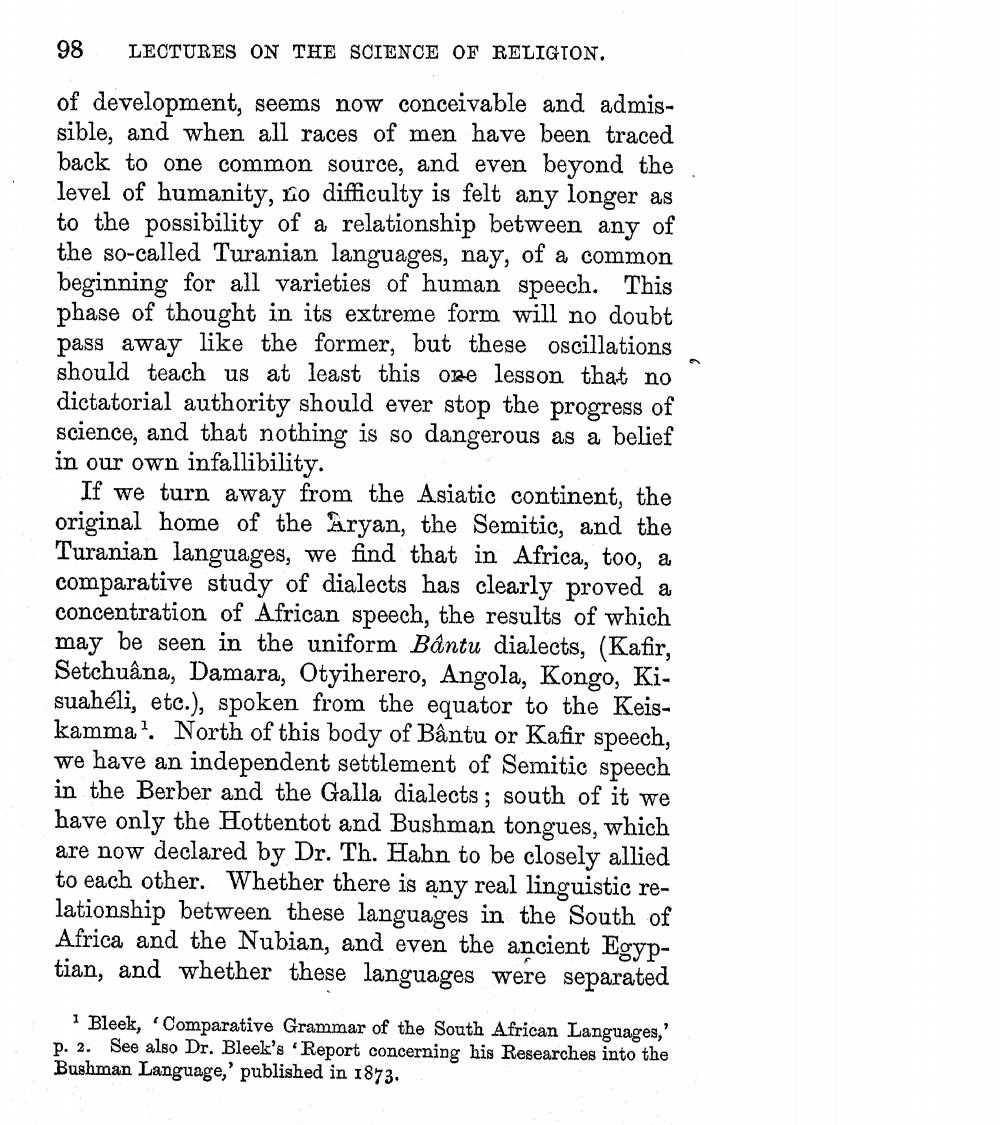________________
98 LECTURES ON THE SCIENCE OF RELIGION.
of development, seems now conceivable and admissible, and when all races of men have been traced back to one common source, and even beyond the level of humanity, no difficulty is felt any longer as to the possibility of a relationship between any of the so-called Turanian languages, nay, of a common beginning for all varieties of human speech. This phase of thought in its extreme form will no doubt pass away like the former, but these oscillations should teach us at least this one lesson that no dictatorial authority should ever stop the progress of science, and that nothing is so dangerous as a belief in our own infallibility.
If we turn away from the Asiatic continent, the original home of the Aryan, the Semitic, and the Turanian languages, we find that in Africa, too, a comparative study of dialects has clearly proved a concentration of African speech, the results of which may be seen in the uniform Bantu dialects, (Kafir, Setchuâna, Damara, Otyiherero, Angola, Kongo, Kisuahéli, etc.), spoken from the equator to the Keiskamma1. North of this body of Bântu or Kafir speech, we have an independent settlement of Semitic speech in the Berber and the Galla dialects; south of it we have only the Hottentot and Bushman tongues, which are now declared by Dr. Th. Hahn to be closely allied to each other. Whether there is any real linguistic relationship between these languages in the South of Africa and the Nubian, and even the ancient Egyptian, and whether these languages were separated
1 Bleek, 'Comparative Grammar of the South African Languages,' p. 2. See also Dr. Bleek's 'Report concerning his Researches into the Bushman Language,' published in 1873.




